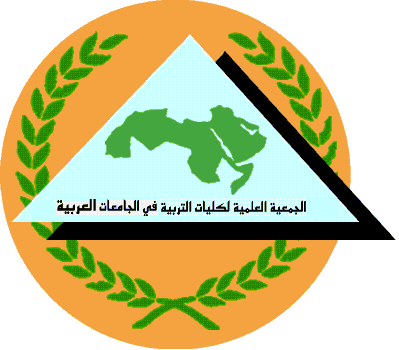Association of Arab Universities Journal for Education and Psychology

Abstract
هدفت الدراسة إلى تقصي درجة الصعوبات التي يواجهها الطلبة ذوو الاحتياجات الخاصة نتيجة دمجهم مع الطلبة العاديين في جامعة البلقاء التطبيقية.
حيث تكونت عينة الدراسة من (48) طالبا وطالبة من ذوي الاحتياجات الخاصة والمدموجين مع الطلبة العاديين في الجامعة والتي تشكل مجتمع الدراسة.
وللإجابة عن أسئلة الدراسة جرى إعداد استبانه خاصة وتحديد هذه الصعوبات ضمن ثلاثة مجالات تتمثل في الجانب الأكاديمي، الجانب المادي، والجانب النفسي الاجتماعي، وجرى استخراج معاملات الصدق والثبات لهذه الأداة .
وتوصلت الدراسة إلى النتائج الآتية:
1- أن ۸۲ % من الصعوبات بمجموعها الأكاديمية والمادية والنفسية الاجتماعية - كانت بدرجة كبيرة ومتوسطة، بحيث يمكن وصفها تعبيرا بأنها مشكلة كبيرة بحاجة إلى تحدي ووضع سلم أولويات للتصدي لها، وتذليل هذه الصعوبات ضمن الظروف والإمكانات المتاحة.
۲- عدم وجود فروق ذات دلالة إحصائية عند مستوى الدلالة ( α = 0.05) في درجة الصعوبات تعزى لأي من متغيرات الجنس أو المستوى التعليمي أو التخصص) على الأداة ككل وعلى جميع المجالات الثلاثة. - توجد فروق ذات دلالة إحصائية عند مستوى الدلالة (α = 0.05) في المجال الأكاديمي والمجال النفسي الاجتماعي في درجة الصعوبات تعزى لنوع الإعاقة بين أفراد عينة الإعاقة السمعية وكل من الإعاقة البصرية والحركية ولصالح عينة الإعاقة السمعية،.
٣- ووجود فروق ذات دلالة إحصائية في المجال المادي في درجة الصعوبات تعزى لنوع الإعاقة بين أفراد الإعاقة البصرية وكل من أفراد الإعاقة السمعية والحركية ولصالح الإعاقة البصرية. أما بالنسبة إلى الأداة ككل فقد كانت الفروق دالة إحصائيا بين الإعاقة السمعية والبصرية ولصالح أفراد الإعاقة السمعية.
The study aimed to investigate the degree of difficulties faced by students with special needs as a result of their integration with ordinary students at Al-Balqa Applied University.
Where the study sample consisted of (48) male and female students with special needs who are integrated with ordinary students at the university, which constitutes the study community.
In order to answer the questions of the study, a special questionnaire was prepared and these difficulties were identified within three areas represented in the academic aspect, the material aspect, and the psychosocial aspect, and the validity and reliability coefficients for this tool were extracted.
The study reached the following results:
1- That 82% of the total academic, material and psychological social difficulties - were of a large and medium degree, so that they can be described expressively as a big problem that needs to be challenged and a priority should be set to address it, and to overcome these difficulties within the available circumstances and capabilities.
2- There are no statistically significant differences at the significance level (α = 0.05) in the degree of difficulties due to any of the variables of gender, educational level or specialization) on the tool as a whole and on all three domains. - There are statistically significant differences at the significance level (α = 0.05) in the academic and psychosocial domains in the degree of difficulties due to the type of disability among the members of the hearing disability sample, both visual and motor disabilities, and in favor of the hearing disability sample.
3- There are statistically significant differences in the material field in the degree of difficulties due to the type of disability between the visually impaired individuals and each of the auditory and motor disabled individuals in favor of the visual disability. As for the tool as a whole, the differences were statistically significant between the audio-visual disability and in favor of the hearing-impaired individuals.
Recommended Citation
غنيم, خولة عبد الرحيم; المكاحلة, أحمد عبد الحميد; and عبيدات, عمر محمد
(2022)
"درجة الصعوبات التي تواجه الطلبة ذوي الاحتياجات الخاصة في جامعة البلقاء التطبيقية من وجهة نظر الطلبة أنفسهم. The degree of difficulties facing students with special needs at Al-Balqa Applied University from the students' point of view.,"
Association of Arab Universities Journal for Education and Psychology: Vol. 14:
Iss.
2, Article 5.
Available at:
https://digitalcommons.aaru.edu.jo/aaru_jep/vol14/iss2/5

